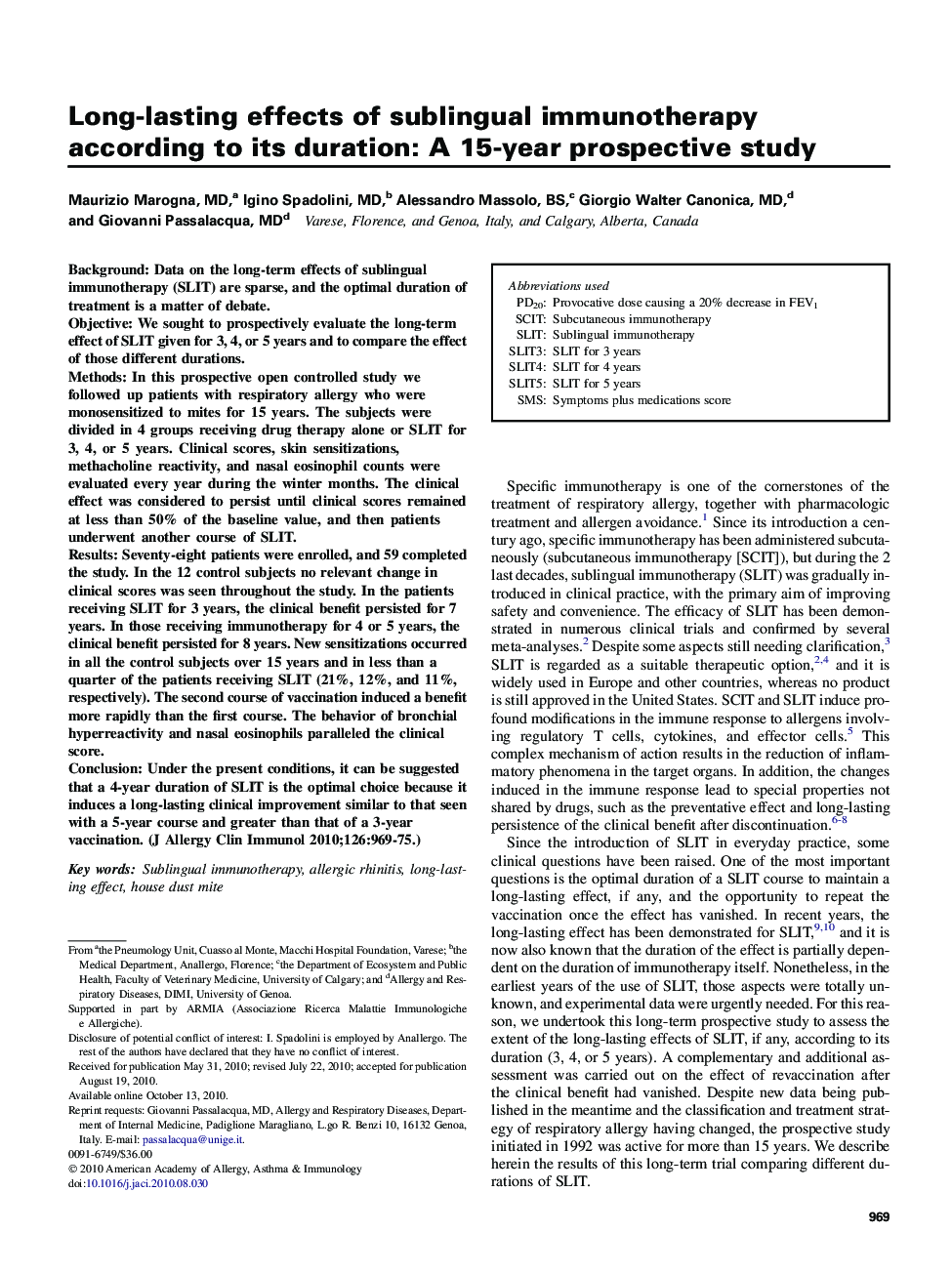| Article ID | Journal | Published Year | Pages | File Type |
|---|---|---|---|---|
| 3199297 | Journal of Allergy and Clinical Immunology | 2010 | 7 Pages |
BackgroundData on the long-term effects of sublingual immunotherapy (SLIT) are sparse, and the optimal duration of treatment is a matter of debate.ObjectiveWe sought to prospectively evaluate the long-term effect of SLIT given for 3, 4, or 5 years and to compare the effect of those different durations.MethodsIn this prospective open controlled study we followed up patients with respiratory allergy who were monosensitized to mites for 15 years. The subjects were divided in 4 groups receiving drug therapy alone or SLIT for 3, 4, or 5 years. Clinical scores, skin sensitizations, methacholine reactivity, and nasal eosinophil counts were evaluated every year during the winter months. The clinical effect was considered to persist until clinical scores remained at less than 50% of the baseline value, and then patients underwent another course of SLIT.ResultsSeventy-eight patients were enrolled, and 59 completed the study. In the 12 control subjects no relevant change in clinical scores was seen throughout the study. In the patients receiving SLIT for 3 years, the clinical benefit persisted for 7 years. In those receiving immunotherapy for 4 or 5 years, the clinical benefit persisted for 8 years. New sensitizations occurred in all the control subjects over 15 years and in less than a quarter of the patients receiving SLIT (21%, 12%, and 11%, respectively). The second course of vaccination induced a benefit more rapidly than the first course. The behavior of bronchial hyperreactivity and nasal eosinophils paralleled the clinical score.ConclusionUnder the present conditions, it can be suggested that a 4-year duration of SLIT is the optimal choice because it induces a long-lasting clinical improvement similar to that seen with a 5-year course and greater than that of a 3-year vaccination.
